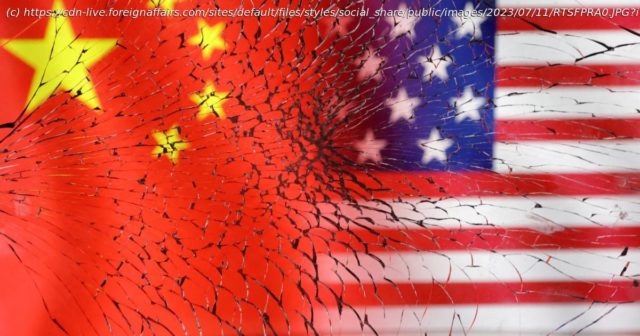Countries will have to choose between America and China.
As the U.S.-Chinese rivalry intensifies, other countries increasingly confront the dilemma of siding with either Washington or Beijing. This is not a choice that most countries wish to make. Over the past decades, foreign capitals have come to enjoy security and economic benefits from association with both the United States and China. These countries know that joining a coherent political-economic bloc would mean forgoing major benefits from their ties to the other superpower.
“The vast majority of Indo-Pacific and European countries do not want to be trapped into an impossible choice,” Josep Borrell, the EU’s top diplomat, observed at a 2022 meeting of the Brussels Indo-Pacific Forum. Philippine President Ferdinand Marcos, Jr., noted in 2023 that his country does not “want a world that is split into two camps [and] … where countries should choose what side they would be on.” Similar sentiments have been expressed by many leaders, including Lawrence Wong, Singapore’s deputy prime minister, and Saudi Foreign Minister Prince Faisal bin Farhan al-Saud. The message to Washington and Beijing is clear: no country wants to be forced into a binary decision between the two powers.
The United States has hastened to reassure its allies that it feels much the same. “We’re not asking anyone to choose between the United States and China,” Secretary of State Antony Blinken said at a press conference in June. Secretary of Defense Lloyd Austin, speaking at Singapore’s Shangri-La Dialogue, insisted that Washington doesn’t “ask people to choose or countries to choose between us and another country.” John Kirby, the White House’s foreign policy spokesperson, repeated the same point in April: “We’re not asking countries to choose between the United States and China, or the West and China.”
It is true that Washington does not insist on an all-or-nothing, us-versus-them choice from even its closest partners. Given the extensive links that all countries—including the United States—have with China, attempting to forge a coherent anti-China bloc would be unlikely to succeed. Even the United States would not join such an arrangement if it required ending its economic relationship with China, which would come at a tremendous cost.
But it may not be possible for much longer for countries to simply sit on the fence. When it comes to a host of policy areas, including technology, defense, diplomacy, and trade, Washington and Beijing are, indeed, forcing others to take sides. Countries will inevitably be caught up in superpower rivalry, and they will be required to step across the line, one way or another. The U.S.-Chinese competition is an inescapable feature of today’s world, and Washington should stop pretending otherwise. Instead, it must work to make the right choices as attractive as possible.WHICH SIDE ARE YOU ON?
As U.S.-Chinese competition has intensified in recent years, countries have been increasingly placed in the unenviable position of having to choose. Under former U.S. President Donald Trump, the United States exerted significant pressure on its allies to not let Huawei, the Chinese telecommunications giant, build their 5G networks. Beijing naturally wished to secure the telecommunications deals, and multiple governments privately expressed concern that barring Huawei would anger China. In response, Washington played hardball. The Trump administration even went as far to suggest to Poland that future U.S. troop deployments might be at risk if Warsaw worked with Huawei. The U.S. government warned Germany that Washington would limit intelligence sharing if Berlin welcomed Huawei; not long after, the Chinese ambassador to Germany promised retaliation against German companies if Berlin barred Huawei. Europe’s largest economy was caught between its top two trading partners.
This dynamic continued under U.S. President Joe Biden. The administration’s 2021 CHIPS and Science Act offered some $50 billion in federal subsidies to American and foreign semiconductor manufacturers that are produced in the United States—but only if they refrain from any “significant transaction” to expand their chip-making capacity in China for ten years.






